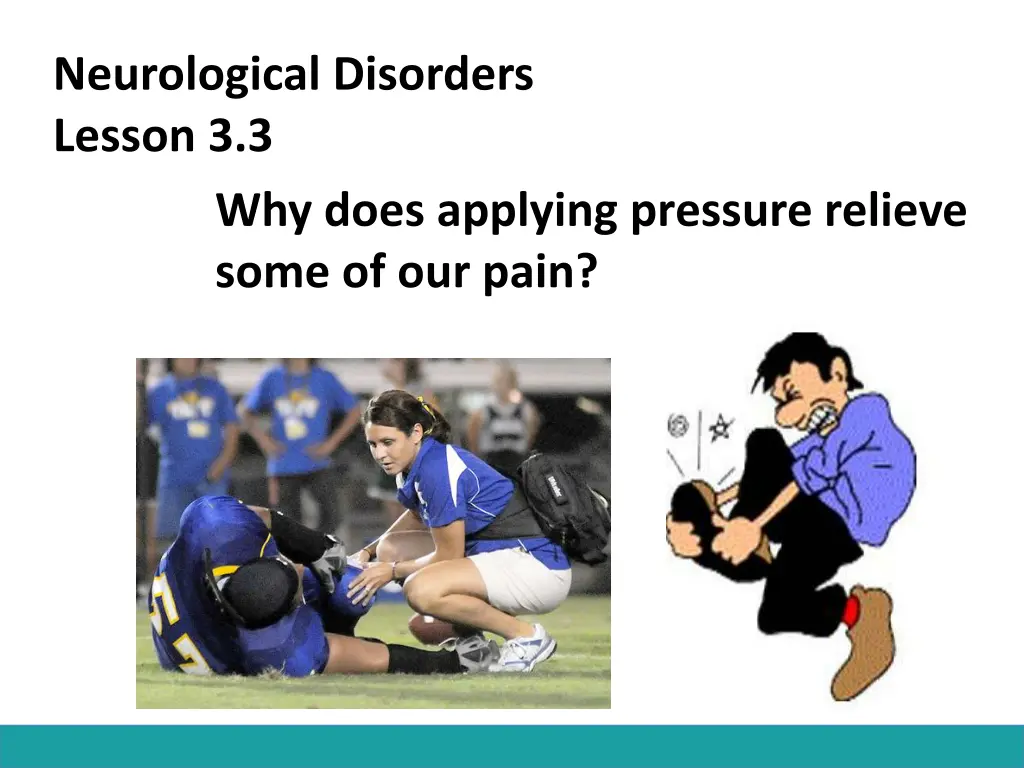
Understanding the Role of Pressure in Pain Relief
Explore the neurological processes behind why applying pressure can alleviate pain, including synaptic transmission, neuronal activity modulation, and the spinal cord circuitry. Discover why instinctively applying pressure to painful areas can be beneficial.
Download Presentation

Please find below an Image/Link to download the presentation.
The content on the website is provided AS IS for your information and personal use only. It may not be sold, licensed, or shared on other websites without obtaining consent from the author. If you encounter any issues during the download, it is possible that the publisher has removed the file from their server.
You are allowed to download the files provided on this website for personal or commercial use, subject to the condition that they are used lawfully. All files are the property of their respective owners.
The content on the website is provided AS IS for your information and personal use only. It may not be sold, licensed, or shared on other websites without obtaining consent from the author.
E N D
Presentation Transcript
Neurological Disorders Lesson 3.3 Why does applying pressure relieve some of our pain?
Do Now: Review the steps of synaptic transmission with a partner Ca2+
Synaptic Transmission 2. Voltage-gated Ca2+ channels open. 4. Ca2+ sensitive proteins fuse synaptic vesicles to membrane. 6. NTs bind to postsynaptic receptors. 3. Ca2+ flows into cell 5. NTs are released into synaptic cleft Ca2+ 1. Action Potential 7. Ion channels open on postsynaptic membrane, allowing ions to flow into cell. 8. Excess NTs are degraded by enzymes or pumped back into presynaptic cell.
Why would you ever want to decrease the activity of neurons?
How could you decrease the activity of neurons? Sodium (Na+) Calcium (Ca2+) Chloride (Cl-) Positive Positive Negative
Getting to Threshold Threshold Voltage at which Na+ channels open Inhibitory Postsynaptic potentials (IPSP) caused by entry of negative ions Excitatory Postsynaptic potentials (EPSP) caused by entry of positive ions
Excitatory and Inhibitory Synapses Excitatory Synapse: Neurotransmitters open Na+ channels producing EPSPs. Inhibitory Synapse: Neurotransmitters open Cl- channels producing IPSPs. - + + - + + IPSPs encounter EPSPs. Threshold is not reached and no action potential is fired. Initial segment reaches threshold and action potential is fired.
Decreasing Neuronal Activity: Why do we instinctively apply pressure to something that is painful?
Build the Circuit in the Spinal Cord Pain neuron To the Brain Pressure neuron Projection Neuron
Build the Circuit in the Spinal Cord Pain neuron Projection neuron + Pain Interneuron To Brain
Add the Pressure Neuron Pain neuron Projection neuron + Pain Pain Interneuron To Brain - Pressure neuron
Depolarization happens when the membrane becomes more positive (inflow of + ions) and the positive charges of the inside matches the positive charges outside of the membrane This causes action potential/threshold to occur Excitatory neurotransmitters Hyperpolarization happens when the membrane becomes more negative (inflow of ions) and the negative charges of the inside is opposite from the positive charges on the outside This causes action potential/threshold less likely to happen Inhibitory neurotransmitters Action of Neurotransmitters






















